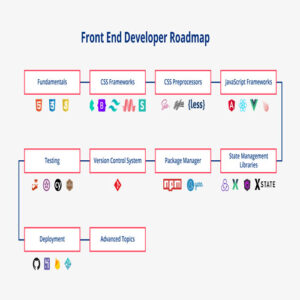In the dynamic landscape of business, staying ahead of the competition is essential for success. A crucial tool in achieving this is the competitive analysis. By delving deep into the strategies, strengths, and weaknesses of competitors, businesses can make informed decisions, refine their own approach, and carve out a distinct position in the market. But what exactly should be included in a comprehensive competitive analysis? Let’s explore the key components that contribute to a thorough examination of the competitive landscape.
Competitor Profiles
At the heart of any competitive analysis are detailed profiles of each competitor. This includes information such as company background, history, size, organizational structure, key personnel, and locations. Understanding the identity and structure of competitors provides context for their strategies and operations.
for more information about “Competitor Analysis” click on the link.
Product/Service Offerings
An in-depth analysis of competitors’ product or service offerings is crucial for identifying areas of overlap, differentiation, and competitive advantage. This includes features, functionalities, pricing models, packaging, and any unique selling propositions (USPs) they may have.

Pricing Strategies
Pricing is a critical factor that influences consumer behavior and market positioning. Examining competitors’ pricing strategies helps businesses understand how they are positioning themselves in the market and whether they are competing on price, value, or differentiation.
Marketing Tactics
How competitors market their products or services can reveal valuable insights into their target audience, messaging, channels, and promotional strategies. This includes analyzing advertising campaigns, content marketing efforts, social media presence, SEO strategies, and branding initiatives.
Market Share and Positioning
Understanding where competitors stand in the market relative to each other and to your own business is essential for strategic planning. This involves assessing market share, market positioning, customer perception, and brand equity to identify areas of strength and vulnerability.
Customer Reviews and Feedback
Customer feedback provides invaluable insights into the strengths and weaknesses of competitors’ offerings from the perspective of those who have experienced them firsthand. Analyzing customer reviews, testimonials, ratings, and comments can reveal pain points, satisfaction levels, and areas for improvement.
SWOT Analysis
Conducting a SWOT (Strengths, Weaknesses, Opportunities, Threats) analysis for each competitor helps distill key insights into their strategic position. This involves identifying internal strengths and weaknesses, as well as external opportunities and threats in the market landscape.
Market Trends and Industry Insights
Keeping abreast of market trends, industry developments, technological advancements, and regulatory changes is essential for understanding the broader context in which competitors operate. This helps anticipate shifts in consumer behavior, emerging opportunities, and potential disruptors.
Financial Performance
While not always readily available, analyzing competitors’ financial performance can provide valuable insights into their profitability, revenue growth, cost structures, and investment priorities. This may include examining financial reports, annual filings, and industry benchmarks.
Future Strategies and Roadmap
Anticipating competitors’ future strategies and direction can help businesses proactively position themselves for success. This involves analyzing announcements, press releases, product roadmaps, hiring trends, and any other indicators of future intentions.
In conclusion, a comprehensive competitive analysis encompasses a broad spectrum of information, ranging from competitor profiles and product offerings to pricing strategies, marketing tactics, and industry insights. By meticulously gathering, analyzing, and synthesizing this information, businesses can gain a deeper understanding of the competitive landscape, identify opportunities and threats, and formulate strategic responses to stay ahead in the market.










